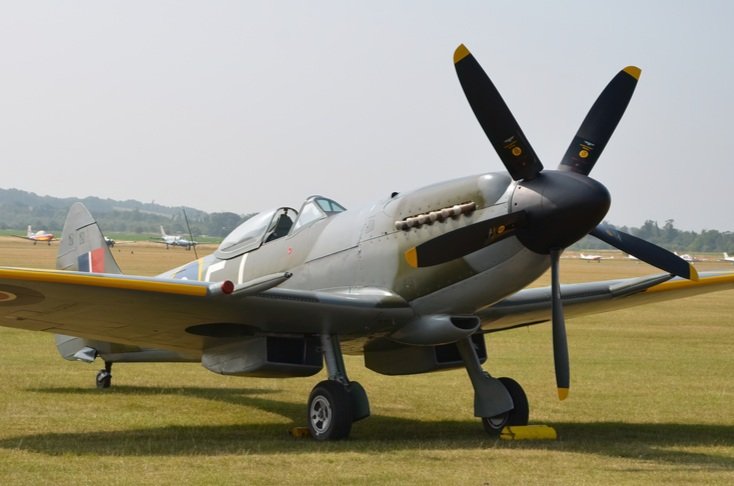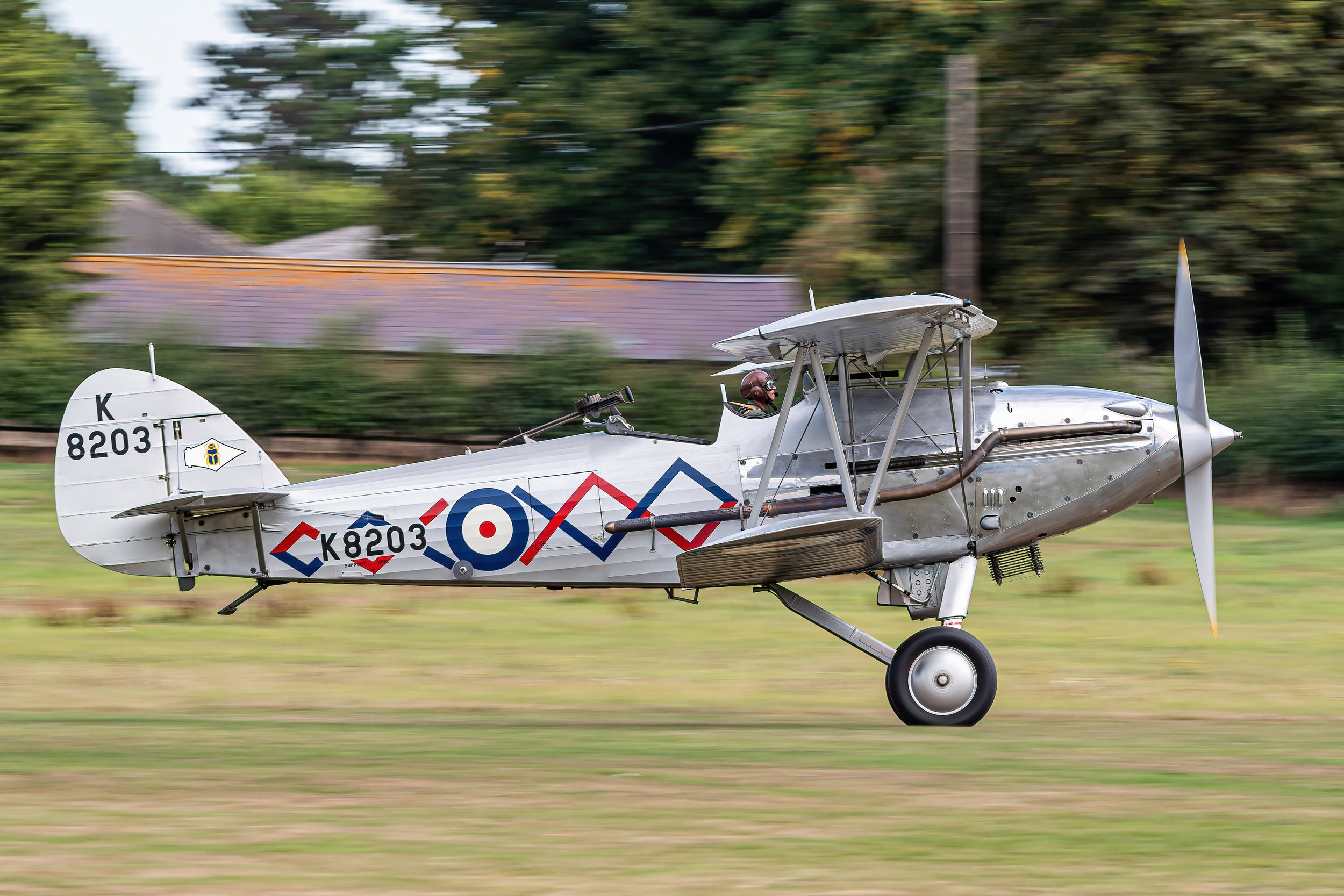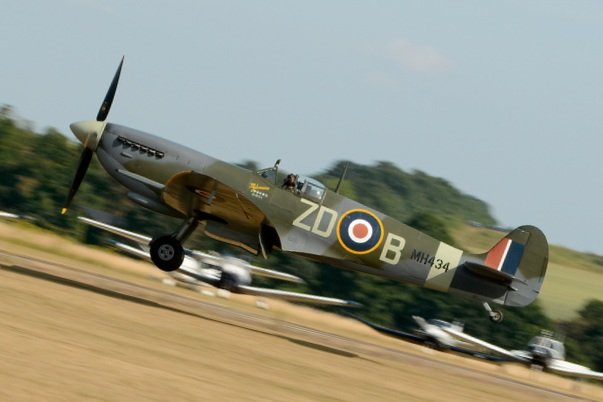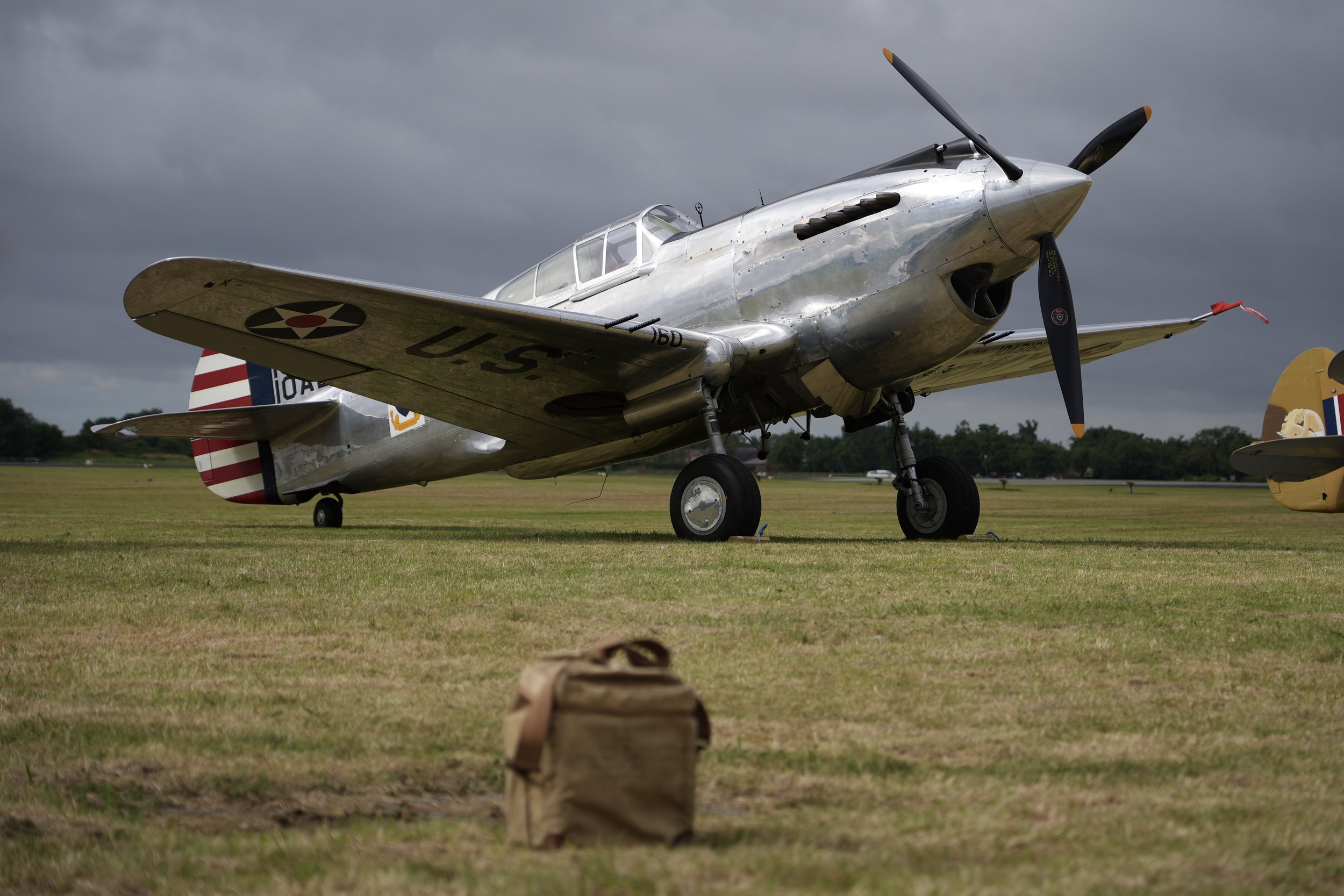P-36 Hawk NX80FR
Year built
1939
Aircraft
P-36C Hawk
Base
Duxford Airfield
This is the last Curtiss P-36C constructed Serial No. 38-210. Built in 1939 and delivered to Selfridge Field, Michigan in May 1939. She participated in the 1939 Cleveland Air Races in September 1939 with experimental camouflage. She participated in the War Games at Maxwell Field following the Air Races. She was sent to Wright Patterson for testing in 1940 and then on to serve with several different squadrons on the U.S. East Coast. In 1942 she was sent to Chanute Technical Training Command for a few months, thereafter she was labelled obsolete and flown to Buckley field in Colorado. She was put into a Tech School following her decommission and was later acquired by a Pratt & Whitney Tech instructor from Canada, where she resided until a Florida collector acquired it and passed her on to The Fighter Collection more than a decade ago. The restoration commenced some four years ago, under the leadership of Matt Nightingale at Chino, California when sufficient original parts capable of overhaul were recovered to ensure that the aircraft could be completed to fly. Steve Hinton carried out the shakedown flights and the FAA certified P-36C made its first public appearances at the 2015 Planes of Fame Airshow, in unique flights with the Museum’s Seversky P-35 in similar markings.
| Back to Top |
Curtiss P-36C Hawk
The Curtiss P-36 Hawk, also known as the Curtiss Hawk Model 75, is an American-designed and built fighter aircraft of the 1930s and 40s. A contemporary of both the Hawker Hurricane and Messerschmitt Bf 109, it was one of the first of a new generation of combat aircraft - a sleek monoplane design making extensive use of metal in its construction and powered by a powerful radial engine.
Perhaps best known as the predecessor of the Curtiss P-40 Warhawk, the P-36 saw little combat with the United States Army Air Forces during World War II. It was nevertheless the fighter used most extensively and successfully by the French Armee de l'air during the Battle of France. The P-36 was also ordered by the governments of the Netherlands and Norway but did not arrive in time to see action before both were occupied by Nazi Germany. The type was also manufactured under license in China, for the Republic of China Air Force, as well as in British India, for the Royal Air Force (RAF) and Royal Indian Air Force (RIAF).
Axis and co-belligerent air forces also made significant use of captured P-36s. Following the fall of France and Norway in 1940, several dozen P-36s were seized by Germany and transferred to Finland; these aircraft saw extensive action with the Ilmavoimat (Finnish Air Force) against the Soviet Air Forces. The P-36 was also used by Vichy French air forces in several minor conflicts; in one of these, the Franco-Thai War of 1940–41, P-36s were used by both sides.
From mid-1940, some P-36s en route for France and the Netherlands were diverted to Allied air forces in other parts of the world. The Hawks ordered by the Netherlands were diverted to the Dutch East Indies and later saw action against Japanese forces. French orders were taken up by British Commonwealth air forces and saw combat with both the South African Air Force (SAAF) against Italian forces in East Africa, and with the RAF over Burma. Within the Commonwealth, the type was usually referred to as the Curtiss Mohawk.
With around 1,000 aircraft built by Curtiss itself, the P-36 was a major commercial success for the company. It also became the basis not only of the P-40 but two other, unsuccessful prototypes: the P-37 and the XP-42.
The Curtiss Model 75 was a private venture by the company, designed by former Northrop Aircraft Company engineer Don R. Berlin. The first prototype, constructed in 1934, featured all-metal construction with fabric-covered control surfaces, a Wright XR-1670-5 radial engine developing 900 hp (670 kW), and typical United States Army Air Corps armament of one .30 in (7.62 mm) and one .50 in (12.7 mm) machine gun firing through the propeller arc. Also typical of the time was the total absence of cockpit armour or self-sealing fuel tanks. The distinctive landing gear, which rotated 90° to fold the main wheels flat into the thin trailing portion of the wing, resting atop the lower ends of the main gear struts when retracted, was a Boeing-patented design for which Curtiss had to pay royalties.
The prototype first flew on 6 May 1935, reaching 281 mph (452 km/h) at 10,000 ft (3,000 m) during early test flights. On 27 May 1935, the prototype was flown to Wright Field, Ohio, to compete in the USAAC fly-off for a new single-seat fighter, but the contest was delayed because the Seversky entry crashed on its way there. Curtiss took advantage of the delay to replace the unreliable engine with a Wright XR-1820-39 Cyclone producing 950 hp (710 kW) and to rework the fuselage, adding the distinctive scalloped rear windows to improve visibility. The new prototype was designated Model 75B with the R-1670 version retroactively designated Model 75D. The fly-off finally took place in April 1936. Unfortunately, the new engine failed to deliver its rated power and the aircraft only reached 285 mph (459 km/h).
Although the competing Seversky P-35 also underperformed and was more expensive, it was still declared the winner and awarded a contract for 77 aircraft. However, on 16 June 1936, Curtiss received an order from USAAC for three prototypes designated Y1P-36. The USAAC was concerned about political turmoil in Europe, and about Seversky's ability to deliver P-35s in a timely manner, and therefore wanted a backup fighter. The Y1P-36 (Model 75E) was powered by a 900 hp Pratt & Whitney R-1830-13 Twin Wasp engine, and the scalloped rear canopy was further enlarged. The new aircraft performed so well that it won the 1937 USAAC competition with an order for 210 P-36A fighters.
The aircraft's extremely low wing loading of just 23.9 lb/ft2 gave it outstanding turning performance, and its high power-to-weight ratio of 0.186 hp/lb gave a superb climbing performance for the time. The single-speed supercharger was a serious handicap at high altitudes. Compared to the later Allison-engined P-40, the P-36 shared the P-40's traits of excellent high-speed handling, roll rate that improved at high speed, and relatively light controls at high speed. However, it was underpowered, affecting its acceleration and top speed, and it did not accelerate in a dive as well as the P-40.
| Back to Top |






| Back to Top |

































